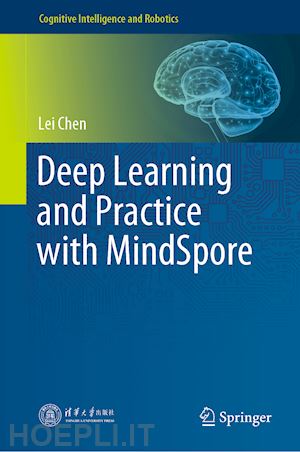

Questo prodotto usufruisce delle SPEDIZIONI GRATIS
selezionando l'opzione Corriere Veloce in fase di ordine.
Pagabile anche con Carta della cultura giovani e del merito, 18App Bonus Cultura e Carta del Docente
This book systematically introduces readers to the theory of deep learning and explores its practical applications based on the MindSpore AI computing framework. Divided into 14 chapters, the book covers deep learning, deep neural networks (DNNs), convolutional neural networks (CNNs), recurrent neural networks (RNNs), unsupervised learning, deep reinforcement learning, automated machine learning, device-cloud collaboration, deep learning visualization, and data preparation for deep learning. To help clarify the complex topics discussed, this book includes numerous examples and links to online resources.
Chen Lei is a Chair Professor of the Department of Computer Science and Engineering and the Director of the Big Data Institute at Hong Kong University of Science and Technology (HKUST). His research focuses on data-driven AI, human-powered machine learning, knowledge graphs, and data mining on social media. He has published more than 400 papers in world-renowned journals and conference proceedings and won the 2015 SIGMOD Test of Time Award. Currently, he serves as the Editor-in-Chief of the VLDB 2019 Journal, the Associate Editor-in-Chief of the IEEE TKDE Journal, and an executive member of the VLDB Endowment. He is also IEEE Fellow and ACM Distinguished Scientist.











Il sito utilizza cookie ed altri strumenti di tracciamento che raccolgono informazioni dal dispositivo dell’utente. Oltre ai cookie tecnici ed analitici aggregati, strettamente necessari per il funzionamento di questo sito web, previo consenso dell’utente possono essere installati cookie di profilazione e marketing e cookie dei social media. Cliccando su “Accetto tutti i cookie” saranno attivate tutte le categorie di cookie. Per accettare solo deterninate categorie di cookie, cliccare invece su “Impostazioni cookie”. Chiudendo il banner o continuando a navigare saranno installati solo cookie tecnici. Per maggiori dettagli, consultare la Cookie Policy.